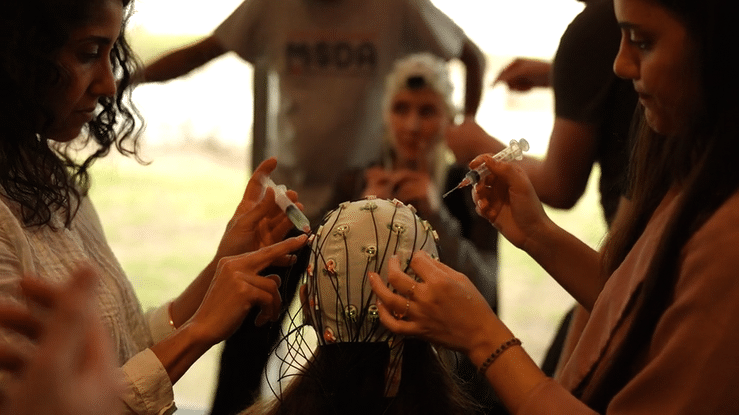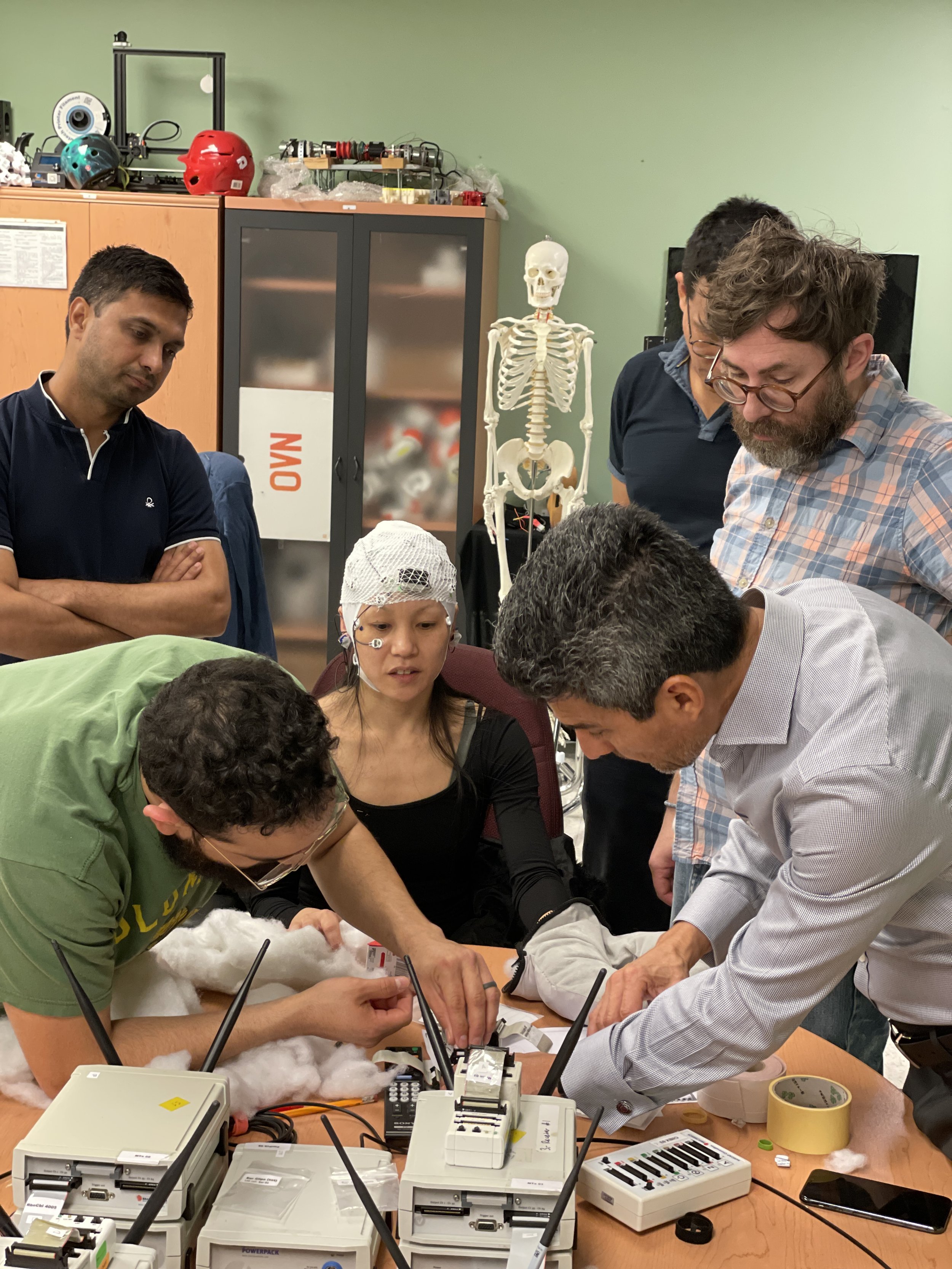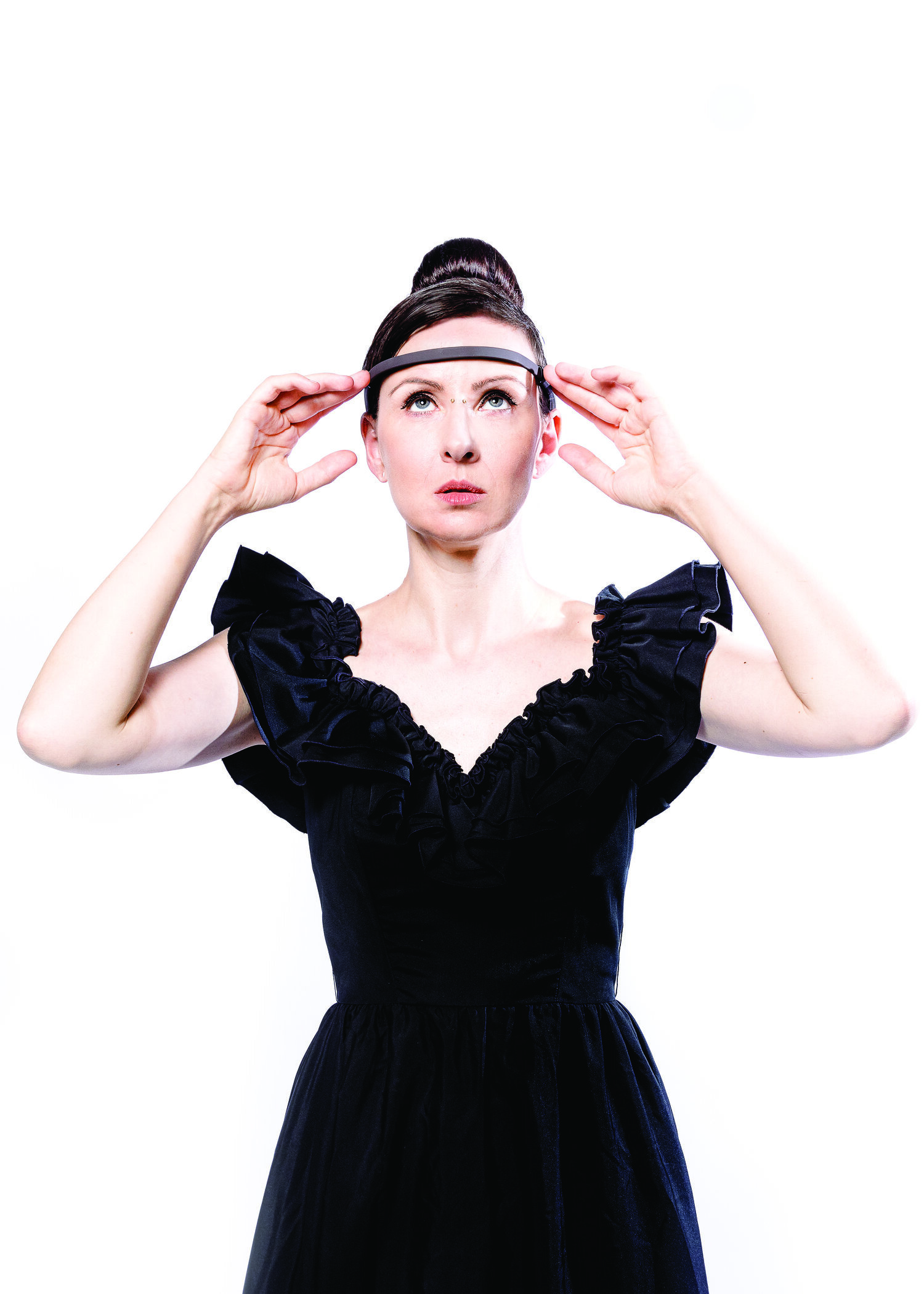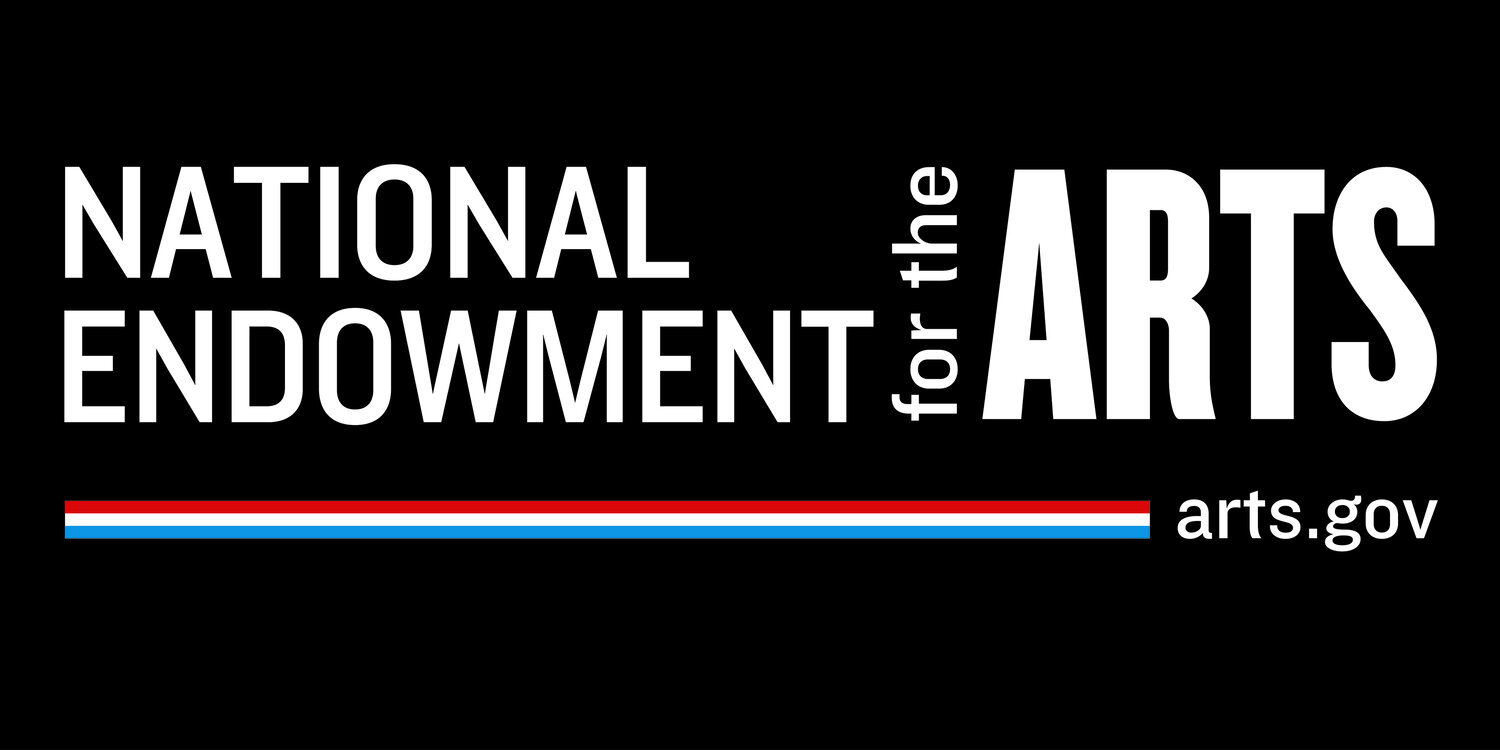Vangeline Theater is home to the New York Butoh Institute.
The New York Butoh Institute is dedicated to the advancement of Butoh in the 21st century, with a special emphasis on education, research and archiving.
The New York Butoh Institute is dedicated to researching the wide range of physical and psychological benefits of Butoh dance. We are interested in the impact of Butoh on health and well being, and in documenting what happens in the brain of people dancing butoh, as well as the effect of Butoh dance on viewers.
OUR MOST RECENT PROJECT:
THE SLOWEST WAVE–BUTOH AND THE BRAIN
FEATURED IN THE NEW YORK TIMES
https://www.nytimes.com/2024/07/15/arts/dance/dance-neuroscience-body-brain-behavior.html
Azumi Oe with The Vangeline Theater at the University of Houston Brain Center and Jose ‘Pepe’ Contreras-Vidal’s lab during preparations for the Slowest Wave pilot study in February 2023
Vangeline with The Vangeline Theater at the University of Houston Brain Center during preparations for the Slowest Wave pilot study in February 2023
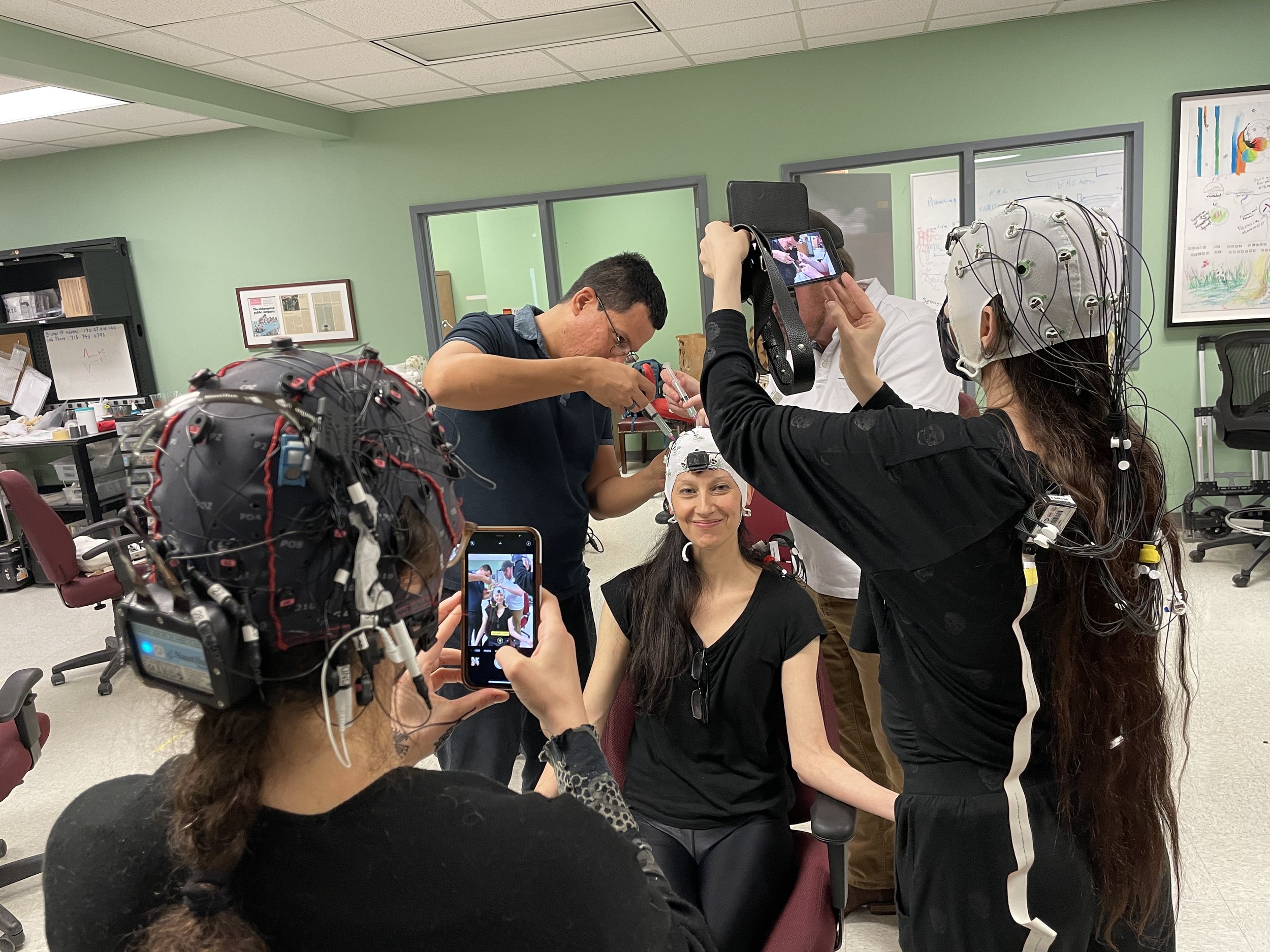

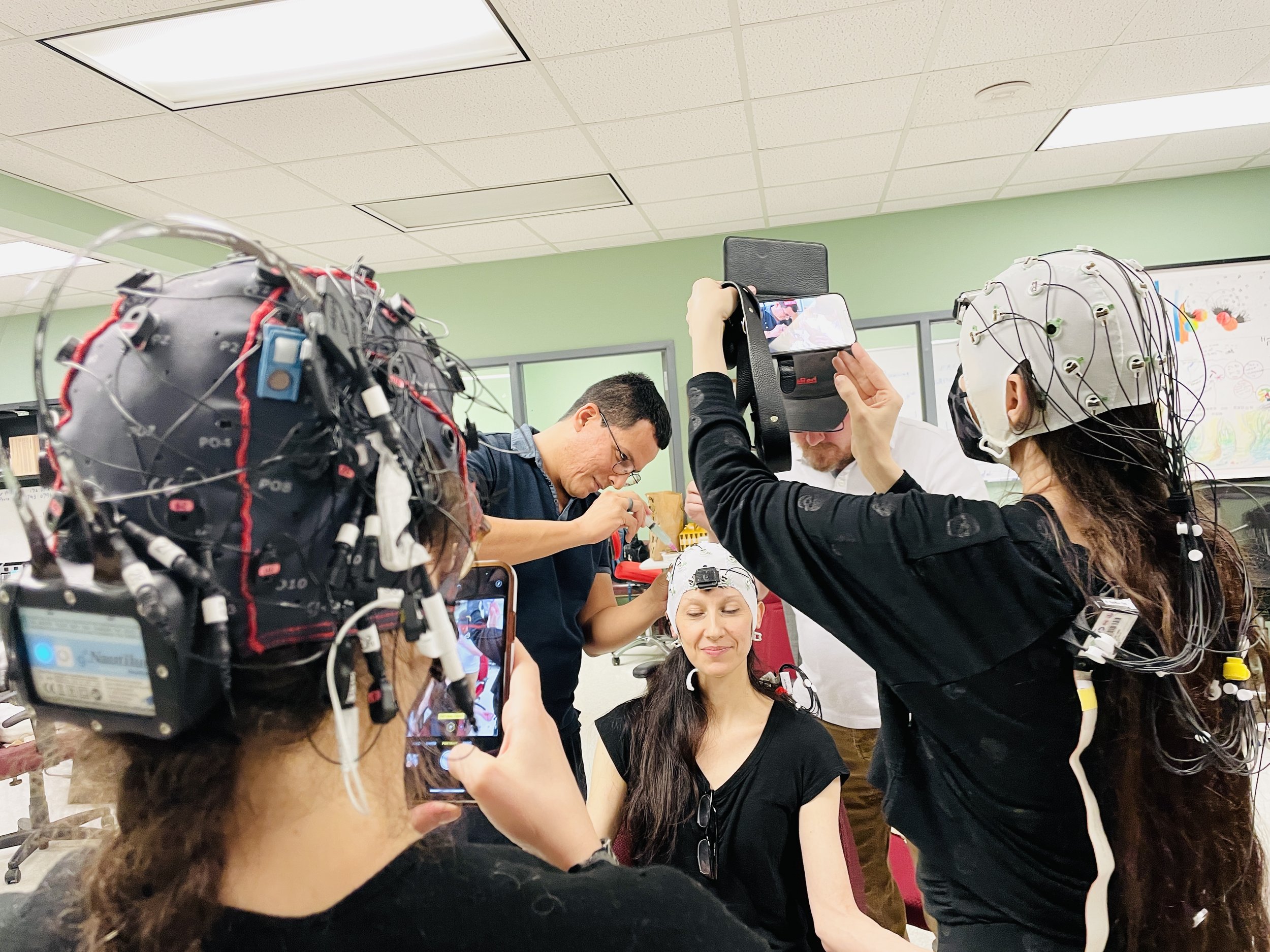
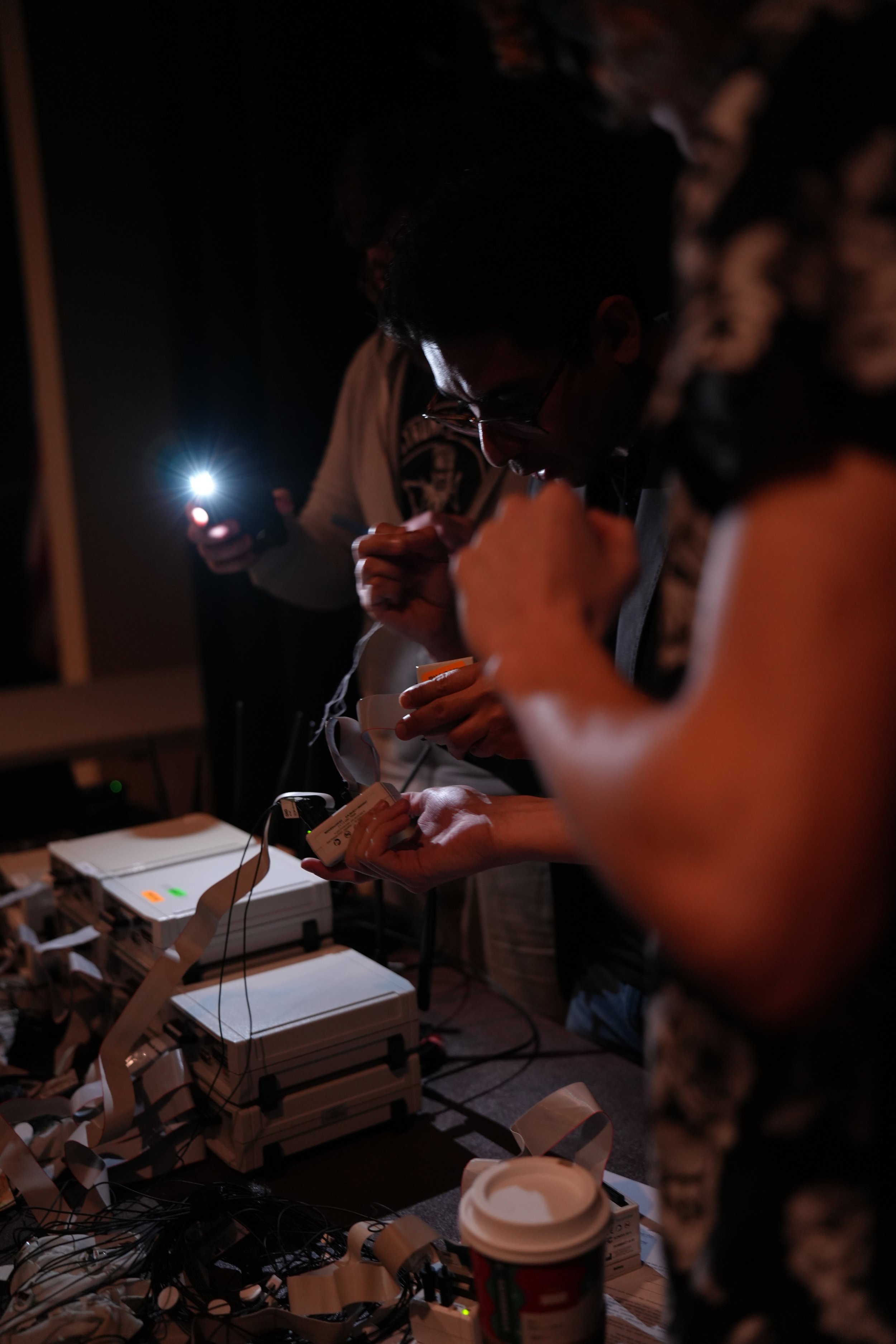
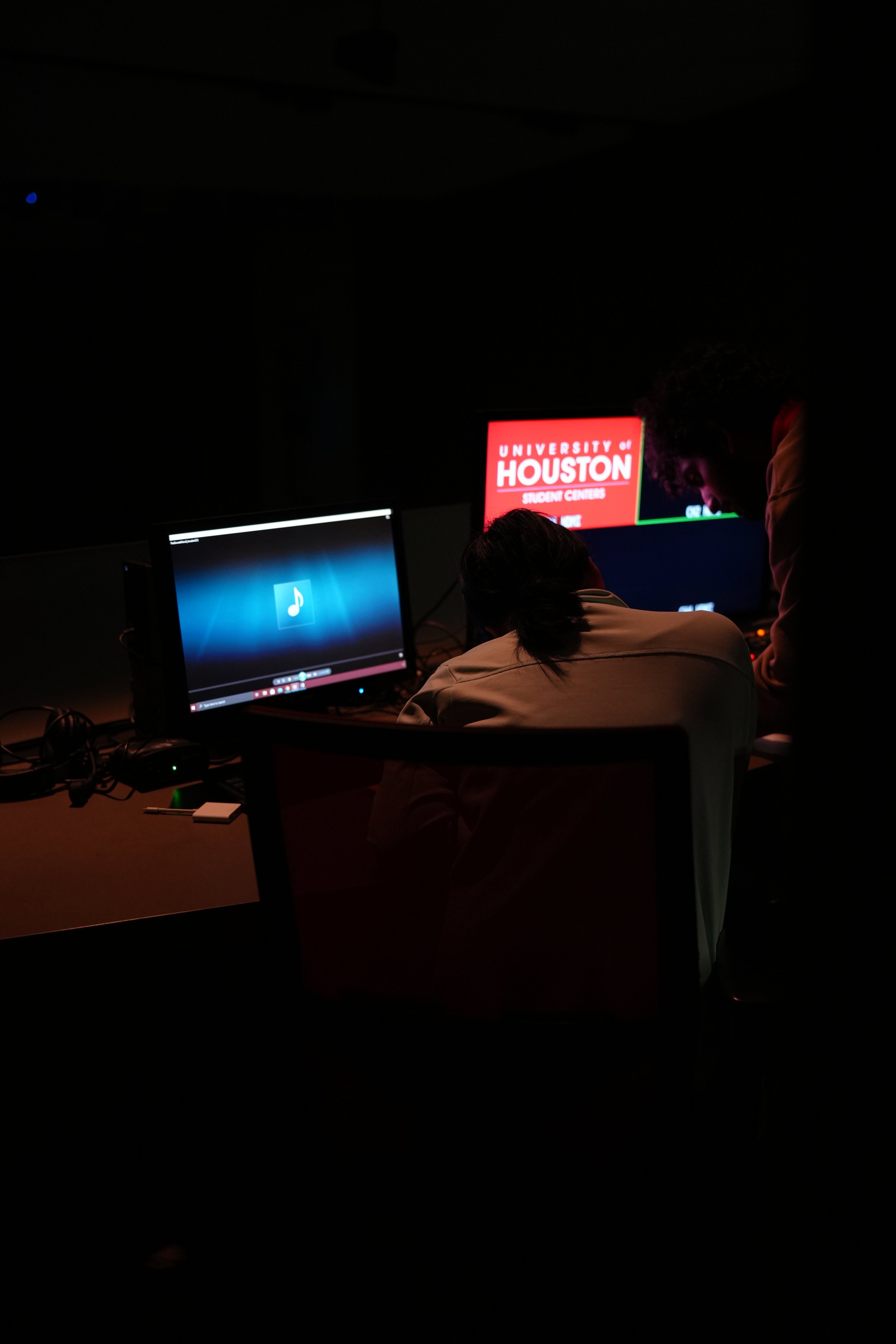
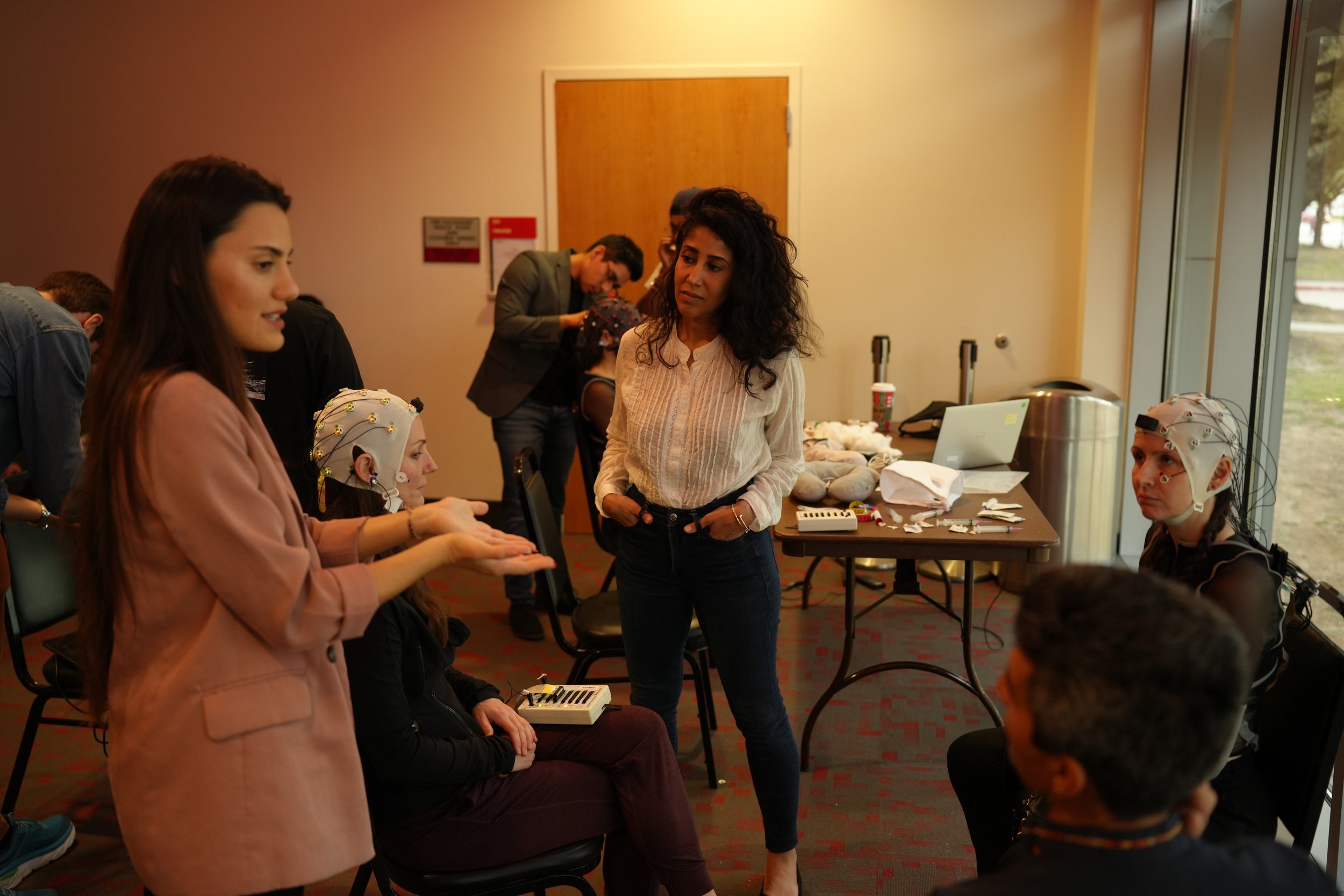
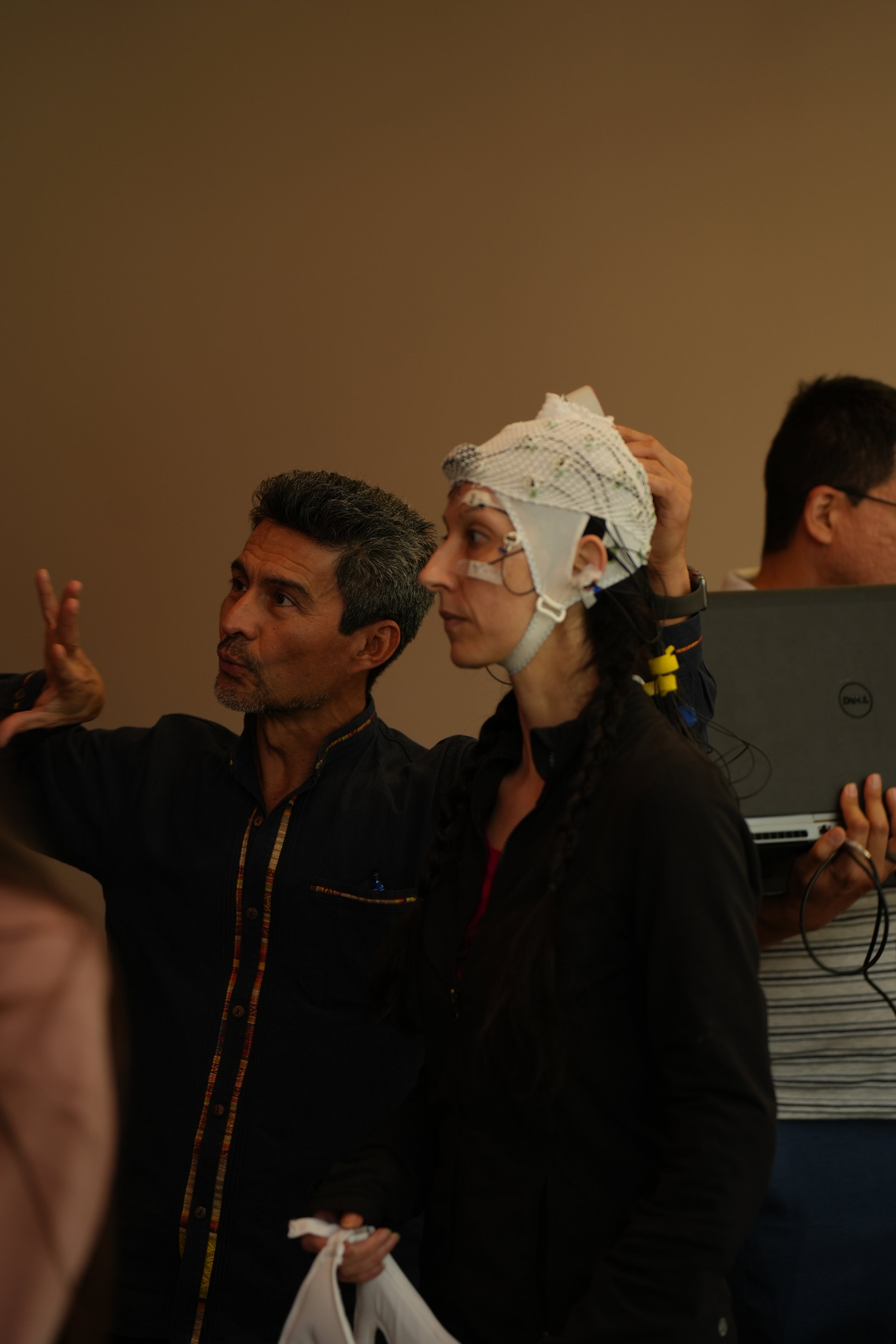

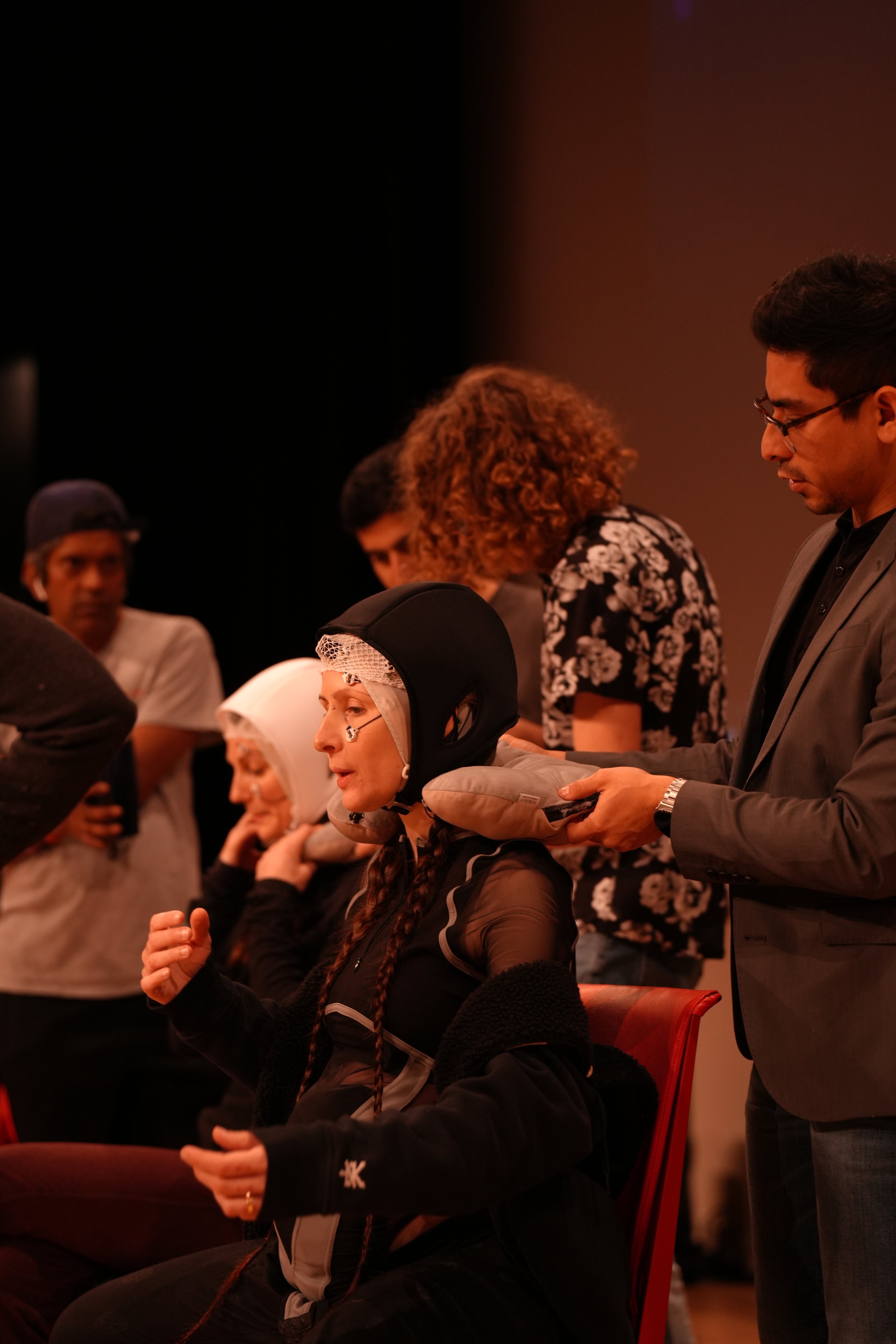
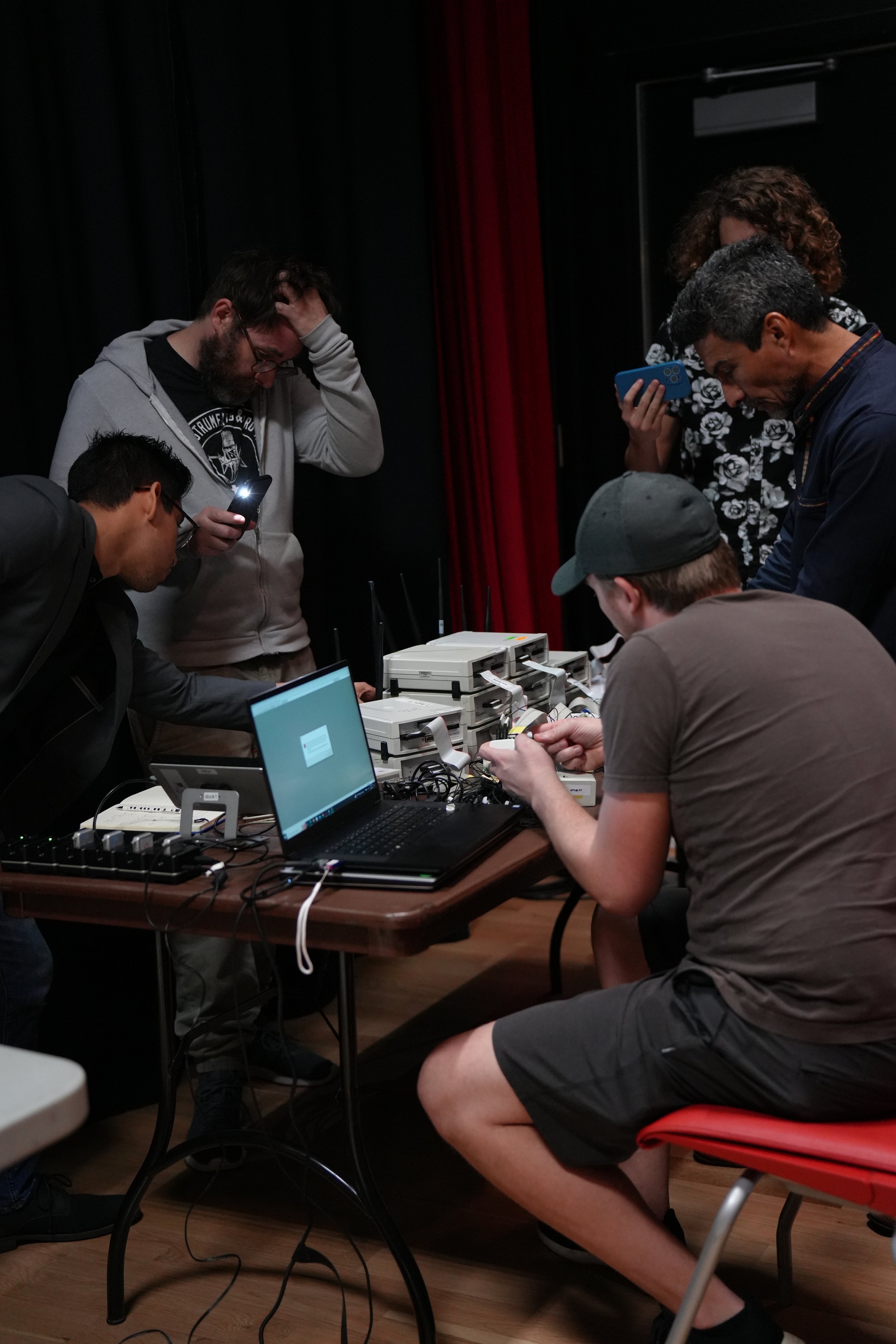
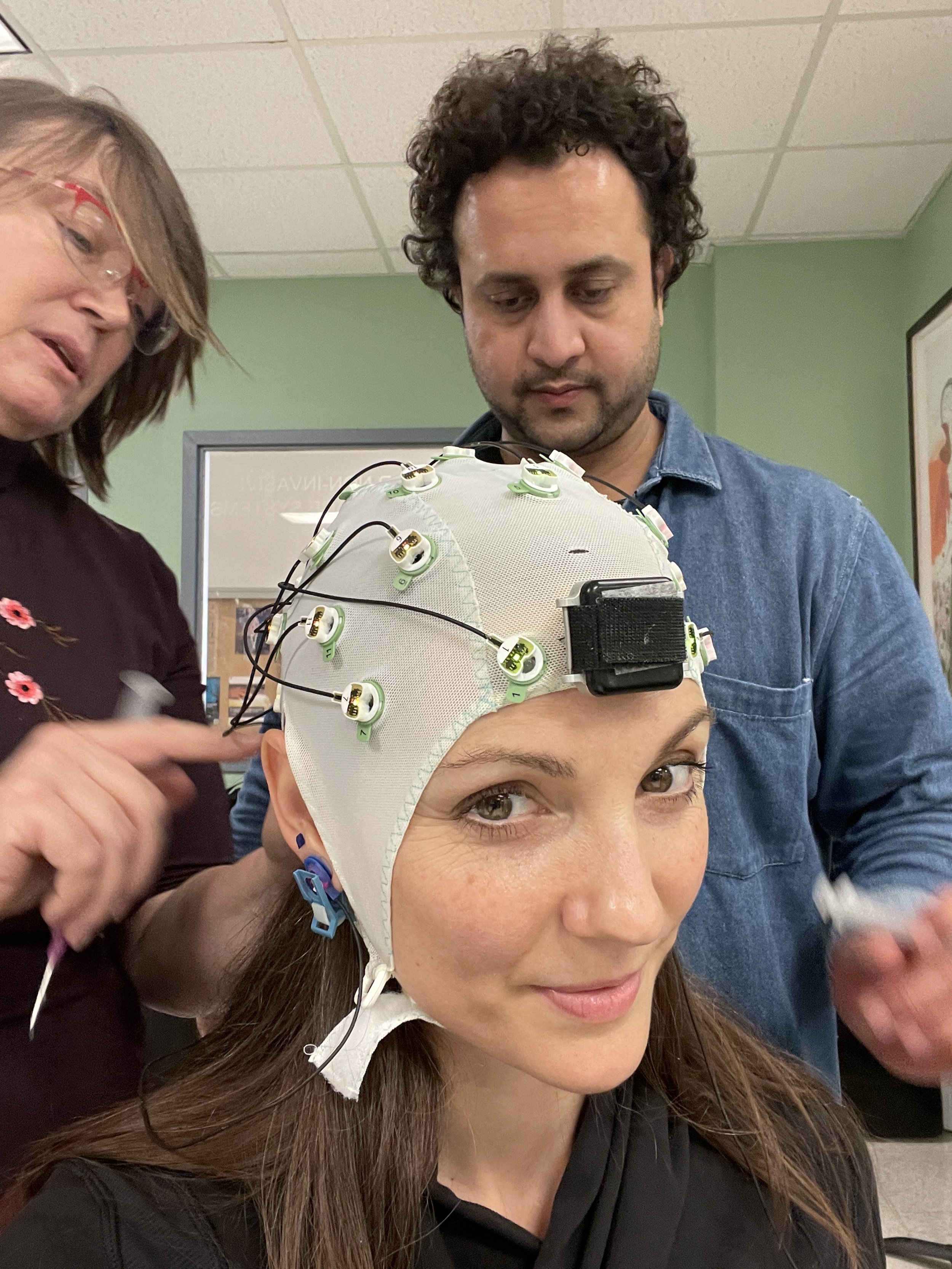


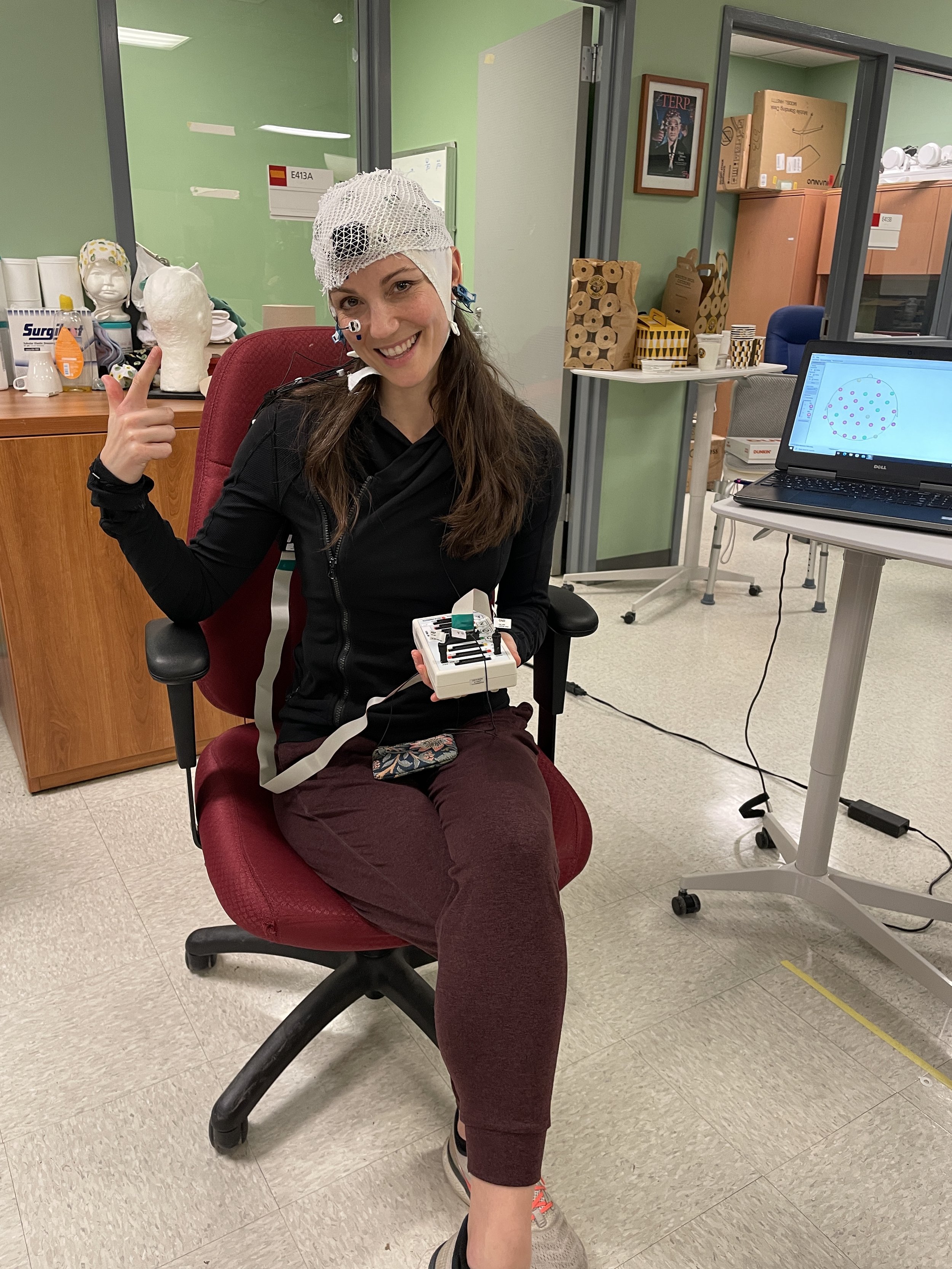
The Slowest Wave/Butoh and The Brain is the culmination of an art-science performance-research study that took place February 6-10, 2023 at the University of Houston, TX. This new study investigates the brain dynamics of dancers while they are performing Butoh, a postmodern dance style that originated in Japan, using electroencephalography (EEG) to record the participants’ brain waves. The study is a collaboration between the New York-based Vangeline Theater dance company, the Laboratory for Noninvasive Brain-Machine Interface Systems, IUCRC BRAIN Center, The Rockefeller University, and the Neurobiology of Social Communication Lab (funded by the City University of New York, Rockefeller University and New York University).
In collaboration with neuroscientists Sadye Paez and Constantina Theofanopoulou, neuro engineer Jose ‘Pepe’ Contreras-Vidal, and composer Ray Sweeten, Vangeline choreographed a 60-minute ensemble butoh piece during her Gibney Dance DiP Artist Residency 2022-2023. The choreography is uniquely informed by the protocol established for a scientific pilot study researching the impact of butoh on brain activity. For the groundbreaking art-science study, dancers' brain activity was recorded at the University of Houston, Texas, with real-time visualization by multimedia artist Badie Khaleghian of the dancers' neural activity. Results were then disseminated in scientific journals.
Vangeline and Sweeten have built on a 20-year history of creative collaboration with a soundscape that is informed by techniques of brainwave entrainment (techniques that affect consciousness through sound). The Slowest Wave investigates through the use of scalp EEG how brain waves during butoh dancing compare to those emitted during other conscious or unconscious motor behaviors, such as speaking or meditating. Moreover, the study will elucidate the functional neural networks of the dancers and the neural synchrony within and between them. This project is meant to foster connections and understanding between dancers, artists, scientists, engineers, and audiences from around the world.
A work in progress of the Slowest Wave premiered at Triskelion Arts in Brooklyn in October 2022 and at Gibney Dance in January 2023.
ACADEMIC PAPER
https://www.biorxiv.org/content/10.1101/2023.02.26.530087v1
Here is the preprint of our art-science study, whose aim was to uncover the brain activity of Butoh. This transdisciplinary collaboration was co-produced by the New York Butoh Institute and hosted by the BRAIN Center at the University of Houston, co-directed by Prof. Constantina Theofanopoulou and Dr. Sadye Paez, who co-conceived the experimental design, Prof. José L. Contreras-Vidal, who directed the neuro engineering design and recordings, and choreographed by Vangeline. We share the methods of how we managed to record brain activity from five Butoh dancers simultaneously and synchronously, at a millisecond resolution, for the first time in scientific history.
READ THE ACADEMIC PAPER
In our preprint, we share the methods of how we managed to record brain activity from five Butoh dancers simultaneously and synchronously, at a millisecond resolution, for the first time in scientific history. We also established a protocol that manages to reduce motion artifacts (e.g., electrode movement artifacts, and electromyographic artifacts originating from head and neck musculature), as well as manufactured our own equipment that protects the electrode caps, processing units and WiFi transmitters when dancers perform movements on the floor. We further report the code Badie Khaleghian used to generate a live visualization of the dancers’ brain activity on a screen behind them while they were dancing, via an artistic brain-computer interface driven by the dancers' interbrain synchrony.
There was a lot of “how to” knowledge that got generated, and we thought we should make it readily available to dance researchers via this study. With this technology at hand, we are confident that we are in a unique position to disentangle the network dynamics of Butoh, and their relation to language, interbrain synchrony during social interaction in artistic settings, and the neural basis of dance therapy.
BIOGRAPHIES
ABOUT VANGELINE
Photo by Michael Blase
Vangeline is a teacher, dancer, and choreographer specializing in Japanese butoh. She is the artistic director of the Vangeline Theater/New York Butoh Institute (New York), a dance company firmly rooted in the tradition of Japanese butoh while carrying it into the twenty-first century.
With her all-female dance company, Vangeline’s socially conscious performances tie together butoh and activism. Vangeline is the founder of the New York Butoh Institute Festival, which elevates the visibility of women in butoh, and the Queer Butoh festival. She pioneered the award-winning, 15-year running program The Dream a Dream Project, which brings butoh dance to incarcerated men and women at correctional facilities across New York State. Her choreographed work has been performed in Chile, Hong Kong, Germany, Denmark, France, the UK, Hong Kong, and Taiwan.
She is the recipient of the 2022/23 Gibney Dance in Process Artist Residency; the winner of a 2022 National Endowment for the Arts Dance Award; the 2015 Gibney Dance Social Action Award, as well as the 2019 Janet Arnold Award from the Society of Antiquaries of London. She is also is a 2018 NYFA/NYSCA Artist Fellow in Choreography for Elsewhere.
Vangeline has taught at Cornell University, New York University, Brooklyn College, CUNY, Sarah Lawrence, and Princeton University (Princeton Atelier). Film projects include a starring role alongside actors James Franco and Winona Ryder in the feature film by director Jay Anania, 'The Letter" (2012-Lionsgate). In recent years, she has been commissioned by triple Grammy Award-winning artists Esperanza Spalding, Skrillex, and David J. (Bauhaus). She is the author of the critically-acclaimed book: Butoh: Cradling Empty Space. Her work is the subject of CNN’s “Great Big Story” "Learning to Dance with your Demons.” She is also featured on BBC’s podcast Deeply Human with host Dessa (episode 2 of 12 : Why We Dance) and is a member of the International Association for Dance Medicine and Science. www.vangeline.com
Sadye Paez is a Fellow at the New York University’s Center for Ballet and the Arts and a Senior Research Associate in the Neurogenetics of Language Laboratory (Erich D. Jarvis) at The Rockefeller University, studying the neurobiology and genetic basis of why humans dance. She is also currently the science communications director for the Vertebrate Genomes Project (VGP), which aims to generate near error-free reference genome assemblies of all ~70,000 living vertebrate species. Sadye’s specific research efforts with these genomic projects focus on the sixth mass extinction and conservation. Sadye’s early training as a physiotherapist and biomechanist laid the underpinnings for her current work in understanding the evolution of dance. She earned her undergraduate and master degrees at the University of Central Florida in Micro and Molecular Biology and Physiotherapy, respectively, and her PhD in Biomechanics/Human Movement Studies from the University of North Carolina at Chapel Hill (UNC-Chapel Hill). She was previously an Assistant Professor in Physiotherapy in the Schools of Medicine at Duke University and UNC-Chapel Hill. Decolonizing science by addressing the principles, processes, and practices that shape STEM culture is Sadye’s passion. She is currently an inaugural chair of the justice, equity, diversity and inclusion committee for the EBP. She is involved with Women in Science at Rockefeller (WISeR); she has also participated in Science Saturday, a STEM festival for K-8 students and their families. Sadye is also a competitive Latin dancer.
Constantina Theofanopoulou is an Associate Research Professor at Hunter College, City University of New York, a Visiting Associate Professor at Rockefeller University. She is interested in understanding the neurobiology of social communication, in complex human behaviors, such as speech and dance. In her trajectory so far, she has led and collaborated in studies ranging from behavioral neuroscience to comparative genomics. Her studies have been published in impactful scientific journals (e.g., Nature, Proceedings of Royal Society B) and her findings have attracted media’s interest worldwide (e.g., Science), while she has been invited to give ~60 lectures, including at Harvard Medical School and Columbia University. Dr. Theofanopoulou has received more than 20 awards for her scientific studies, including the distinction in the Forbes 2021 list of the 30 most successful scientists under the age of 30. Dr. Theofanopoulou is also actively involved in the dissemination of science to the general public and in inspirational speech (e.g., speech at the University of Yale, TED talk), as well as in the support of underrepresented minorities in science. She has served as STEM mentor in the New York Academy of Sciences, teaching Life Sciences to elementary and middle school students in underserved communities throughout NYC, and in 2021, she was voted networking coordinator at the Council of the Rockefeller Inclusive Science Initiative. Lastly, Constantina is a flamenco dancer, having performed in many solo and group shows worldwide; in 2012, she was awarded with the first prize of the Spanish Dance Society.
Jose ‘Pepe’ Contreras-Vidal, PhD (Fellow IEEE, Fellow AIMBE) is Cullen Distinguished Professor of Electrical and Computer Engineering and Director of the NSF Research Center for Building Reliable Advances and Innovations in Neurotechnology (IUCRC BRAIN) at the University of Houston. He pioneered noninvasive brain-machine interfaces to exoskeletons and prosthetics to restore motor function in individuals with disabilities. His work at the nexus of art and science is opening new windows to study the neural basis of human creativity in children and adults while informing neuroaesthetics, neural interfaces, and the power of the arts (dance, music, visual art) as a modulator of brain activity. Dr. Contreras-Vidal has collaborated with many performing and visual artists to investigate the neural basis of creativity; most recently, he collaborated with Tony Brandt, a Professor of Composition and Theory at Rice University’s Shepherd School of Music and Artistic Director of the new music ensemble Musiqa, and Noble Motion Dance Company on “LiveWire,” a new ballet in which each section was inspired by a different feature of brain behavior. Two of the dancers were outfitted with EEG caps that monitored their brains during the rehearsal and performance. To celebrate the 200th anniversary of the publication of Beethoven’s Diabelli Variations, a new chamber work titled Diabelli 200, one of four winners of the 2022 Performing Arts Houston competition, will be premiered in Houston on February 25, 2023. Diabelli 200, composed by Tony Brand, reveals the inner workings of human imagination and will feature flute, clarinet, piano, percussion, violin, and cello (Musiqa) while showcasing cutting-edge mobile brain-body neurotechnology to visualize the brain in action. Dr. Contreras-Vidal edited the Springer book Mobile Brain-Body Imaging and the Neuroscience of Art, Innovation, and Creativity. He was the co-chair of the 2022 International Workshop on the Social and Neural Bases of Creative Movement held at the Wolf Trap National Center for the Performing Arts. His career development in biomedical engineering was highlighted by the journal Science. Dr. Contreras-Vidal has received many awards and honors, including being named a Senior Research Scholar by the City of Paris, France, a Fellow of the Human Frontiers Science Program, and named a member of the National Advisory Board for Medical Rehabilitation Research (NABMRR) at the National Institute of Health. His research has been supported by the National Science Foundation, the National Institutes of Health, DARPA, Industry and Philanthropy. His research has appeared in The Economist, Nature, Science, Der Spiegel, and Wall Street Journal, among others.
Ray Sweeten aka Barragan-Sweeten (b. 1975) is a visual artist & sound maker based in New York and Rhode Island. He has performed and screened works at Moma/PS1, San Francisco Electronic Music Festival, New York Film Festival, Anthology Film Archive, Issue Project Room, Participant Gallery, Microscope Gallery, The Kitchen, Roulette, and toured throughout Europe as a member of Fabrica Musica. He has released music as f13 on Beige Records as The Mitgang Audio on Suction Records. In 2010 he co-founded DataSpaceTime with visual artist Lisa Gwilliam and has exhibited, performed, and screened works at Centre Pompidou, Parish Museum, City Center NY, Microscope Gallery, AS220, Next Festival at BAM, Florida Atlantic University, and Cica Museum. He has taught at Guggenheim Museum and was guest artist faculty at Sarah Lawrence with L. Gwilliam. DataSpaceTime is represented by Microscope Gallery in NYC.
Azumi Oe wearing a Muse 2 brain sensing headband. Photo by Tal Shpantzer.
The raw value of live performance is what fuels Butoh dancer azumi O E. Mesmerizing, shocking and playful movement is choreographed with meticulous timing, conspiring a visual relationship between the inner and outer human dimensions. Azumi wields her physical form as an expression and exploration of full individuality routed by the notion of collective oneness.Following eight years with New York-based company Vangeline Theatre and as Assistant Choreographer/Principal Dancer for Butoh Master Katsura Kan, azumi O E makes a continuous effort to exceed artistic constructs. She regularly develops experimental projects through solo pieces and collaborations with artists of various mediums. Notable co-operative works span video art and live performance with contemporary visual artist MARCK; composer Takuya Nakamura, “Impulsive Instrument” with Bassist Sean Ali, and upcoming duo with bassist Tim Dahl. www.azumioe.com
Sindy Butz wearing a Muse 2 brain sensing headband. Photo by Tal Shpanzer.
Sindy Butz is a German-born interdisciplinary visual and performance artist, Butoh dancer, somatics science researcher, and fabricator living and working in New York City.
She is the founder and artistic director of Ash River Studios, an art and design house based in Greenpoint, Brooklyn. Butz immersive artworks, installations, and endurance performances were exhibited worldwide in museums, galleries, and theaters such as the Brooklyn Museum, Queens Museum, New Museum, Museum der Dinge Berlin, Theater for the New City, Dixon Place, and Princeton University. She was featured by the Marina Abramovic Institute, Hyperallergic, and the NY Times. Currently, she is working on her upcoming installation for the opera project Black Lodge by composer David T. Little and libretto Ann Waldman, for Opera Philadelphia.
Butz is a certified BodyMind Dancing™ and FlemingElastxx® instructor, Butoh-, Chi Kung- and Dynamic Embodiment Practitioner™. Sindy has been a principal dancer of Vangeline Theater from 2010 to 2018 and joined the New York Butoh Institute faculty in 2016. She has trained extensively in Japanese Butoh dance, Noguchi Gymnastics, and Katsugen Undo with Vangeline, Yoshito Ohno, Semimaru of Sankai Juku, Natsu Nakajima, Mari Osanai, and Tetsuro Fukuhara, among others.
She holds a Bachelor's Degree in Visual Arts from the academy AKI Enschede (Netherlands) and a Master's Degree in Art Science from the University of the Arts Berlin, Germany. She concluded her postgraduate research with a renowned DAAD (Deutscher Akademischer Austauschdienst) scholarship at the New York University, Interactive Telecommunication Program in wearable art and assistive technology.
Kelsey Strauch is a visual and movement artist based in Brooklyn. With a BFA in painting from University of Oregon and completion of the Professional Track program at New England Center for Circus Arts in Brattleboro, VT she has toured extensively as a professional circus artist specializing in object manipulation. Growing up in Montana she developed a deep relationship with the natural world that she carries into her visual and movement art. Most recently seen at the Metropolitan Opera in Philip Glass's 'Akhnaten' as a member of the juggling ensemble. Kelsey is honored to be collaborating with Vangeline. Her first Butoh performance was with Tetsuro Fukuhara's 'Tokyo Space Dance' as a part of Future Fest in 2013. Kelsey has worked in Film, Television, Editorial and Commercial work throughout her 10 years in NYC. More notably she has worked with Rick Owens, Cirque du Soleil, Orange is the New Black, CBS Sunday Morning, Real Simple Magazine, Rodney Smith, Snarkitecture, LA Opera and The Metropolitan Opera to name a few.
Margherita Tisato is a dancer, teacher to teachers, movement enthusiast, and a passionate changemaker. She has been dancing and teaching since she was 17 and leading yoga and meditation classes, workshops and teacher trainings for over a decade.
In New York since 2006, she is a principal dancer with Sokolow Theater/Dance Ensemble, Dances We Dance, and works with Dances by Isadora et al. Margherita started studying Butoh with Vangeline in 2007, becoming a principal dancer with the Vangeline Theater in 2008 until 2017, and has been training regularly with other prominent Butoh Masters, making Butoh an integral part of her artistic and spiritual practice. She teaches butoh workshops internationally.
Margherita is known for creating Trauma-informed spaces for transformation. She facilitates a range of experiences spanning from meditation, yoga and somatic movement to dance, Butoh, and body suspension.Other educational offerings include experiential workshops in anatomy, pain science, embodiment, and trauma theory. Notably she has been a guest speaker at the University of Nebraska, and the Transart Institute Creative Research PhD program with the Liverpool John Moores University. She co-taught Sokolow repertory and technique classes at Loyola University in Chicago, Williams College in Massachusetts and Ailey-Fordham in New York. She has taught in prisons and addiction recovery programs in NYC since 2015, and she’s currently working on a research grant on Embodiment and Addiction through the University of Nebraska Rural Drug Addiction Research Center.
The Slowest Wave is supported in part by an award from the National Endowment for the Arts, as well as the NSF IUCRC BRAIN Center at the University of Houston, and by public funds from the New York City Department of Cultural Affairs in partnership with the City Council, and the New York State Council on the Arts with the support of the Governor and the New York State Legislature.
About The Rockefeller University
The Rockefeller University is one of the world's leading biomedical research universities and is dedicated to conducting innovative, high-quality research to improve the understanding of life for the benefit of humanity. The university’s 70 laboratories conduct research in neuroscience, immunology, biochemistry, genomics, and many other areas. A community of 2,000 faculty, students, postdocs, technicians, clinicians, and administrative personnel work on our 16-acre Manhattan campus. Our unique approach to science has led to some of the world's most revolutionary and transformative contributions to biology and medicine. During Rockefeller's 121-year history, our scientists have won 26 Nobel Prizes, 25 Albert Lasker Medical Research Awards, and 20 National Medals of Science.
EARLIER EXPERIMENTS
Dai Matsuoka’s brain wave activity recorded in Spring 2018. New York Butoh Institute.
Brain Mapping for Butoh
New imaging technologies now allow researchers to document the brain activity of Butoh dancers, and research centers are well equipped to study Butoh training and its broader neurological implications. The New York Butoh Institute is pioneering a scientific study of the brain activity of butoh dancers in the US and abroad.
Vangeline’s brain wave activity recorded for Erasure (2019)
Studio test recording of brainwave activity in Butoh with Muse 2 recording headband. October 28, 2019. New York Butoh Institute. Subject: Butoh dancer Brenda Polo (Colombia).



